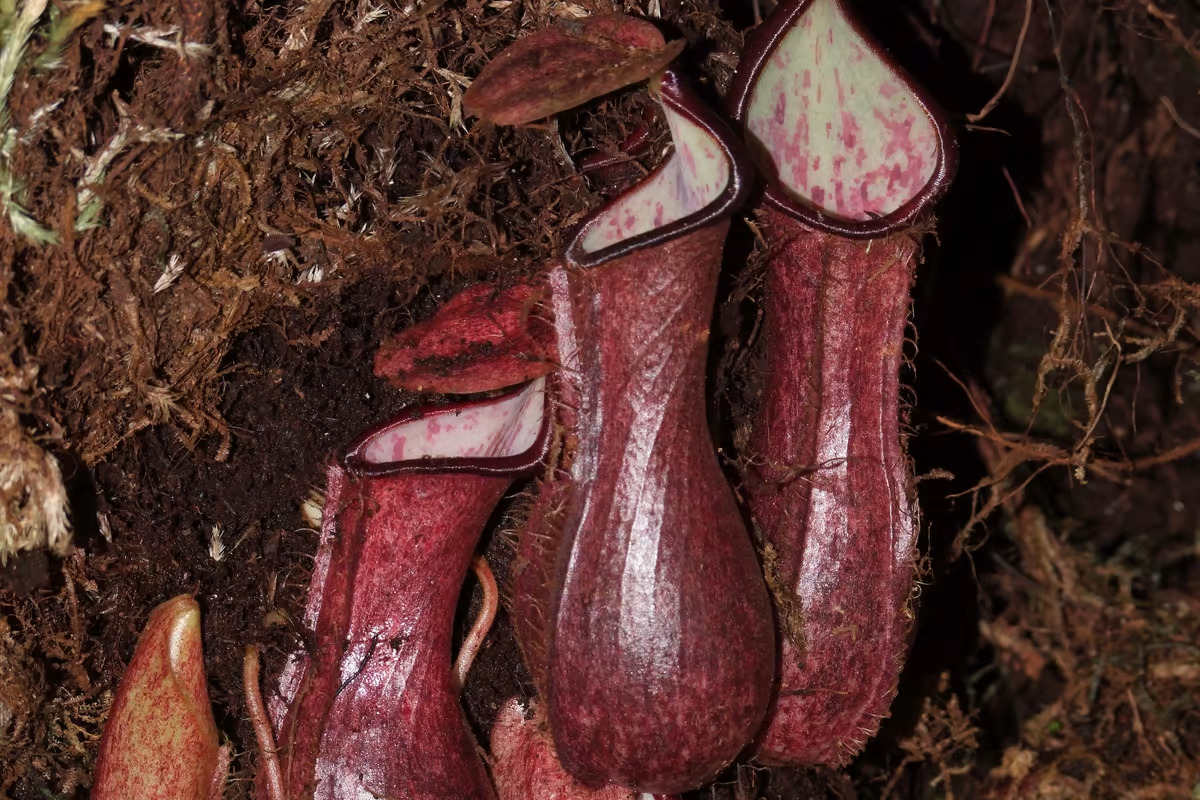
Some of Nepenthes pudica’s subterranean pitchers, unearthed by the researchers. Martin Dančák
Ordinarily, pitcher plants lure and catch insects via modified leaves that grow above the ground. These vertically oriented pitcher-shaped appendages are roughly cylindrical, with an open top and an enclosed bottom.
Insects such as flies are initially drawn in by attractive pigments or nectar, but then slip on the slick rim of the pitcher when they land on it. They proceed to fall to the bottom of the pitcher, where they drown in a pool of collected water. Their bodies then dissolve and are digested by the plant.
In 2012 an international group of scientists spotted pitcher plants in one region of Borneo, which initially appeared to completely lack pitchers.
Upon further investigation, however, the researchers found that the plants had underground shoots that supported subterranean pitchers. Growing either in underground cavities or directly into the soil, the pitchers measured up to 11 cm long (4.3 in), and were capturing soil-dwelling prey such as ants, mites and beetles.
The plants have now been classified as a unique species of pitcher plant, named Nepenthes pudica – the latter part of the moniker is derived from the latin word pudicus, which means “bashful.”
It is believed that the plants evolved the underground pitchers in response to their high-altitude dry ridge-top habitat, where water is scarce and above-ground insects are often in short supply. “We hypothesize that underground cavities have more stable environmental conditions, including humidity, and there is presumably also more potential prey during dry periods,” said team member Michal Golos, a PhD student at the University of Bristol.
A paper on the research – which was led by Prof. Martin Dančák of Palacký University Olomouc in the Czech Republic – was recently published in the journal PhytoKeys.
Source: Pensoft Publishers via EurekAlert
–
–










Most Viewed
Cabless autonomous electric truck approved for US public roads
COVID-19 increases risk of Alzheimer’s, Parkinson’s & stroke, study finds
Common bone density scan can predict later-life dementia risk
Vision EQXX squeezes a staggering 747 miles out of less than 100 kWh
Cold temperatures induce anti-inflammatory molecule that counters obesity
CEO test-drives Mojo Vision’s smart augmented reality contact lens
Pyramid lenses catch light from any angle to boost solar cell efficiency
Lunar probe spies unusual double crater at rocket impact site on Moon
Genomic analysis finds monkeypox virus is mutating unusually fast
Novavax COVID vaccine surprisingly effective against all Omicron variants
LEO Flight reveals alpha prototype for its eVTOL flying hypercar
Artificial photosynthesis lets plants grow efficiently in total darkness
GoSun’s solar-powered camper trailer pops up in under 10 minutes
Wearable muscles offer an impressive upper-body endurance boost
Cygnus cargo ship allows US to control ISS orbit without Russian help